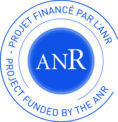The practice of walking in urban areas has been considerably transformed since the arrival of instrumental mapping tools like Google Maps. After several years of experimentation on collective walks using a shared mapping application, a central question clearly emerged: to what extent are instrumental and shared maps likely to change our behaviours and spatial representations?
While previous studies attempted to identify the impact of navigation tools on our cognitive representations, none really addressed the impact of collective interaction tools between walkers in urban environments. Specifically, this research aims at comparing spatial representations – obtained through sketch maps and graphs – and behaviour in space, translated through passively collected tracking data.
More precisely, trackings and drawings will be compared in a fixed way (final result), but especially in a dynamic way: spatio-temporal evolution of the walks and spatio-temporal evolution of the construction of the sketch maps and the graphs. Thus, we will carry out a cross-analysis of spatio-temporal evolution of walking – behaviors – and of the construction of filmed sketch maps – representations – (but also by considering the behavioral aspect in the construction of both sketch maps and graphs).
Our methodology includes 4 groups of subjects: i. test group ; ii. group using an instrumental mapping application (Google Maps), iii. group using a shared mapping application ; iv. group iii. that will repeat the experiment. It will be developed in 3 phases: a) Analysis and confrontations of individual and collective spatial representations; b) Analysis and confrontations of individual and collective behaviours; c) Confrontation of behaviours and spatial representations.
Keywords: spatio-temporal analysis, cognitive maps, shared maps, spatial behaviour, wanders, externalizations, collective interactions, urban walks, instrumental navigation, spatial representation.
